Jana Götze
clembench: Using Game Play to Evaluate Chat-Optimized Language Models as Conversational Agents
May 22, 2023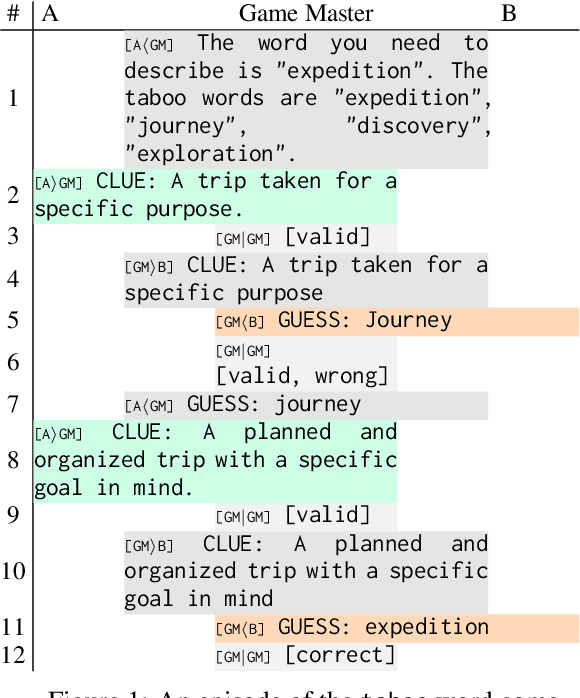
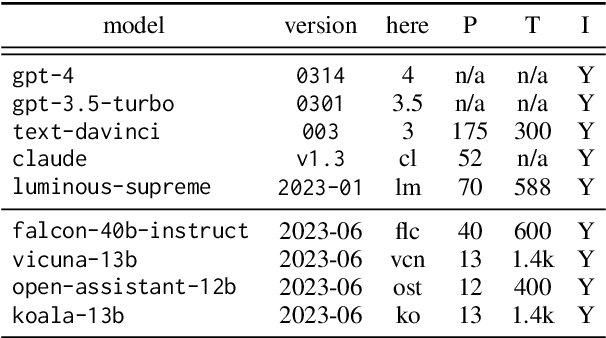
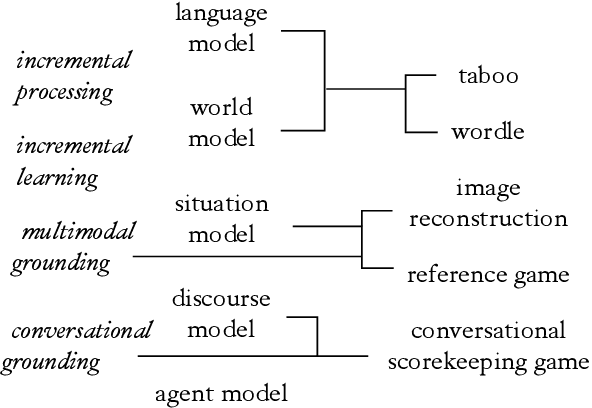
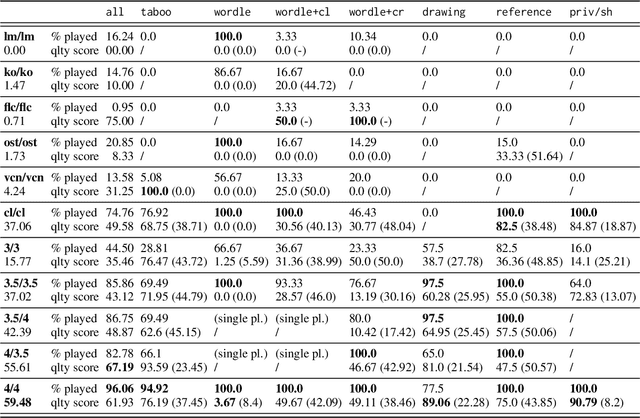
Abstract:Recent work has proposed a methodology for the systematic evaluation of "Situated Language Understanding Agents"-agents that operate in rich linguistic and non-linguistic contexts-through testing them in carefully constructed interactive settings. Other recent work has argued that Large Language Models (LLMs), if suitably set up, can be understood as (simulators of) such agents. A connection suggests itself, which this paper explores: Can LLMs be evaluated meaningfully by exposing them to constrained game-like settings that are built to challenge specific capabilities? As a proof of concept, this paper investigates five interaction settings, showing that current chat-optimised LLMs are, to an extent, capable to follow game-play instructions. Both this capability and the quality of the game play, measured by how well the objectives of the different games are met, follows the development cycle, with newer models performing better. The metrics even for the comparatively simple example games are far from being saturated, suggesting that the proposed instrument will remain to have diagnostic value. Our general framework for implementing and evaluating games with LLMs is available at https://github.com/clp-research/clembench.
The slurk Interaction Server Framework: Better Data for Better Dialog Models
Feb 02, 2022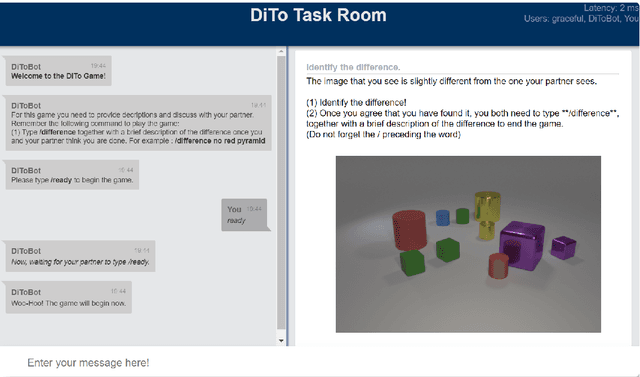
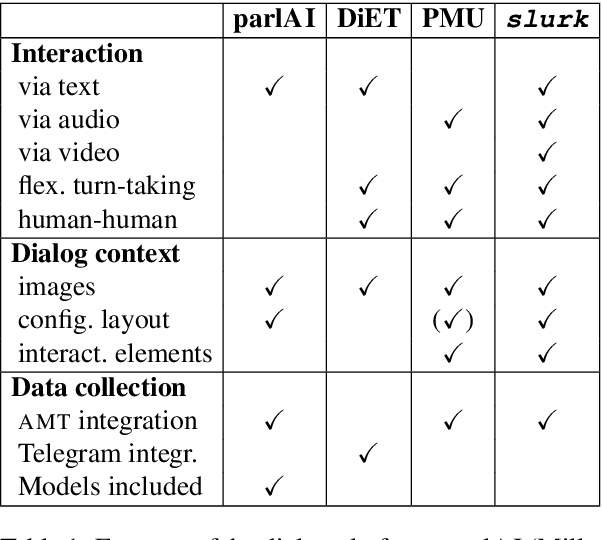
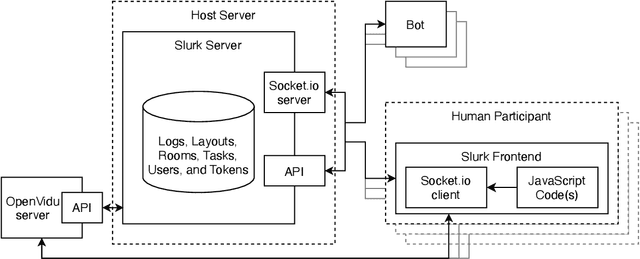
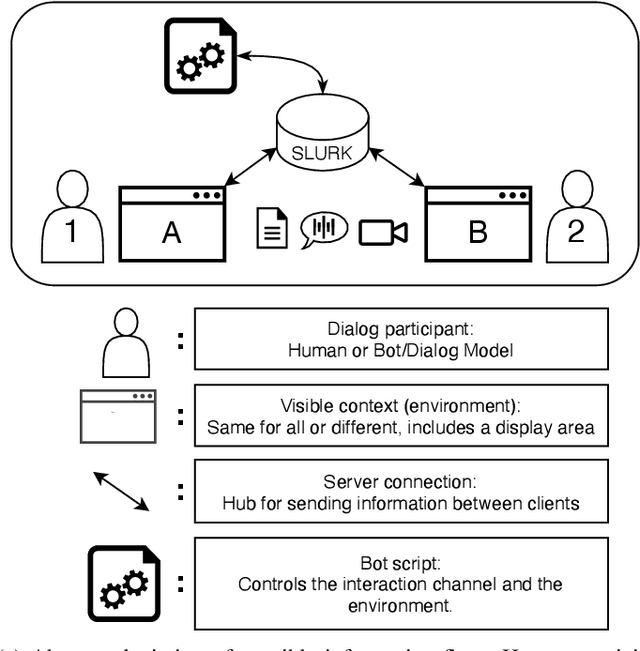
Abstract:This paper presents the slurk software, a lightweight interaction server for setting up dialog data collections and running experiments. Slurk enables a multitude of settings including text-based, speech and video interaction between two or more humans or humans and bots, and a multimodal display area for presenting shared or private interactive context. The software is implemented in Python with an HTML and JS frontend that can easily be adapted to individual needs. It also provides a setup for pairing participants on common crowdworking platforms such as Amazon Mechanical Turk and some example bot scripts for common interaction scenarios.
 Add to Chrome
Add to Chrome Add to Firefox
Add to Firefox Add to Edge
Add to Edge